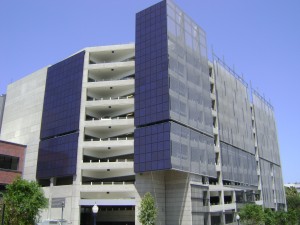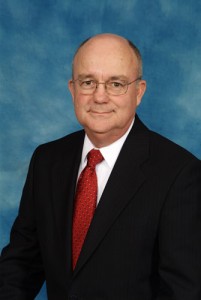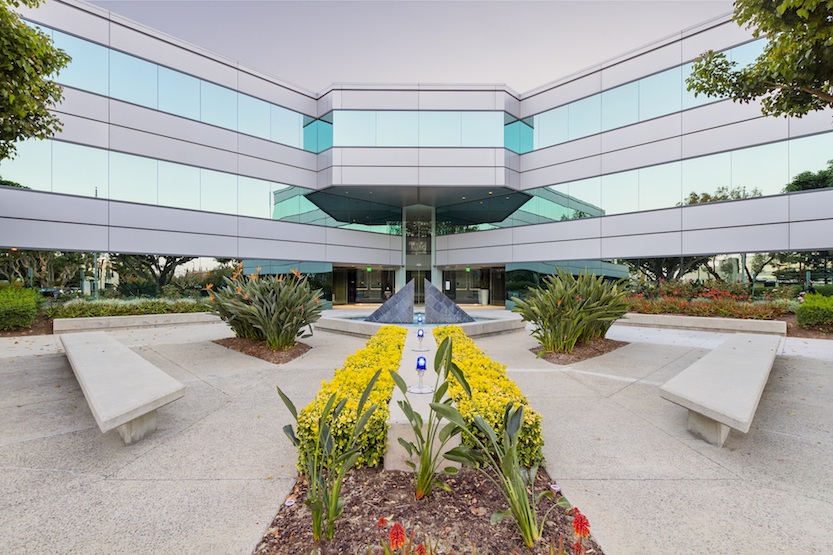Daily Business Report — Sept. 27, 2010
Solar Array Turned Live At City College

The largest vertical solar array in the United States — it has more than 350 panels on the south façade and roof of the Career Technology Center at San Diego City College — was installed by Sullivan Solar Power. The system is monitored via a Web-based interface that allows Sullivan Solar Power to see the daily, weekly, monthly, yearly and lifetime data of the system’s production output in order to determine system performance and functionality. The solar PV system is projected to generate roughly 67,558 kilowatt-hours per year, or enough energy to power more than 1,000 homes for one day. It will generate clean energy for over 25 years. The system was featured during a ribbon-cutting ceremony at the Downtown San Diego campus. The California Center for Sustainable Energy awarded the organization a rebate check from the California Solar Initiative for $105,517. “Not only will the installation generate enough solar power to provide for a portion of the building’s energy needs, but the vertical array also provides a very visual statement about the (San Diego Community College) District’s commitment to renewable energy,” said Daniel Sullivan, founder and president of Sullivan Solar Power.
Port of San Diego CEO Resigns

Charles D. Wurster has resigned as president and CEO of the Port of San Diego, a job he has held since January 2009. Wurster said in a memo to port employees on Friday that while he has thoroughly enjoyed his association with the port, its tenants and stakeholders, it is time for him to move on. “I am proud to have been associated with such a talented and dedicated group of public servants. You have shown your dedication to the missions of the Port District, and persevered through challenging economic times,” he said. Port officials said Wurster is credited with initiating a strict plan to balance the Port’s budget, including cutting back on consultants, limiting travel for employees, initiating a hiring freeze and implementing a one day a month work furlough.
Leap Wireless International COO to Retire
Al Moschner, chief operating officer of Leap Wireless International Inc. in San Diego, has announced his retirement effective Dec. 31 or when a successor is appointed. Moschner joined Leap as a consultant in September 2004 and was appointed interim senior vice president of marketing before being appointed executive vice president and chief marketing officer in February 2005. He was named COO in July 2008. Before joining the company, Moschner’s career included executive roles with several companies, including Verizon Card Services; OnePoint Services Inc., a telecommunications company that he founded and that was acquired by Verizon; Diba Inc., a development-stage Internet software company ultimately purchased by Sun Micro Systems; Zenith Electronics; and IBM.
Cricket Finalizes Denali Spectrum Acquisition
Cricket Communications, a subsidiary of Leap Wireless International, has reached agreement to acquire all remaining interests in Denali Spectrum LLC and control of Denali’s greater Chicago and southern Wisconsin markets. Cricket currently owns an 82.5 percent non-controlling membership interest in Denali. Under the purchase agreement, Cricket will acquire the remaining 17.5 percent controlling membership interest currently held by Denali Spectrum Manager LLC.
Escondido High Expansion’s First Phase Completed

Echo Pacific Construction Inc. has completed the first phase of Escondido High School’s expansion and modernization project and has finished stadium improvements at Escondido High, Orange Glen High and San Pasqual High School. The stadium improvements included new synthetic turf and all-weather track surfaces. The projects are a part of the Escondido High School District’s $98 million bond, Proposition T, approved by voters in 2008 for capital improvements and new construction at the three high schools and construction of a new “bio tech” high school slated to open for the 2013-2014 school year.
The first phase at Escondido High, valued at $20.5 million, included modernization of science and computer labs, new visual art classrooms, administration offices, a new gymnasium floor, as well as expansion/modernization to the auto and agricultural classrooms. New construction included a new music/physical education building, stadium ticket booths, parking lot improvements, hardscape, and landscaping. The second phase, which involves a new gymnasium, wrestling and dance facility along with modernization of two classrooms, is currently underway. Completion is slated for February 2011.
Kyocera and REC Solar Install Solar Energy System in Vineyards
Kyocera Solar Inc., a wholly-owned subsidiary of Kyocera International of San Diego, and REC Solar Inc. have completed the installation of a 1.134-megawatt solar energy system at Castle Rock Vineyards in California’s Central Valley. The system, designed and installed by REC Solar, consists of 5,400 Kyocera high-output 210-watt modules. It is one of the largest agricultural solar arrays of its kind. The installation is expected to have a yearly production output of 1,761,971 kilowatt hours, offsetting Castle Rock Vineyards’ energy usage by 69 percent.
Greenhouse Gas Emission Reductions Ordered
The San Diego region will be required to reduce greenhouse gas emissions from cars and light trucks 7 percent per capita by 2020 and 13 percent by 2035, according to targets set by the California Air Resources Board (CARB). The new regulations apply to emissions from passenger cars and light trucks – with the baseline year set in 2005. In the San Diego region in that year, drivers of passenger vehicles emitted an average of 26 pounds of carbon dioxide per person each weekday. (A “pound” of C02 has enough volume to fill two large garbage bags.)
• To meet the 7 percent reduction goal, a person would need to cut his or her emissions by 1.8 pounds per weekday. That’s like burning 21 fewer gallons of gas a year or planting five trees and maintaining them for 10 years.
To achieve a 7 percent reduction, a person could: telecommute to work one day a month; carpool two days a month; bike or walk instead of driving 10 miles a week; take the bus instead of driving 12 miles a week.
• For a 13 percent reduction, a person would need to cut his or her emissions by 3.4 pounds per weekday. That’s like burning 38 fewer gallons of gas a year; planting nine trees and maintaining them for 10 years; shutting off the average home’s electricity for two weeks; or recycling 228 pounds of waste instead of sending it to the landfill.
To achieve a 13 percent reduction, a person could: telecommute to work two days a month; carpool to work four days a month; bike or walk instead of driving 18 miles a week; take a bus instead of driving 21 miles a week.
In approving the targets, CARB was responding to a requirement of Senate Bill 375 passed in 2008, which requires organizations such as SANDAG to include a Sustainable Communities Strategy (SCS) in their long-range transportation plans. Different targets were set for different regions. The draft SCS will be considered by SANDAG’s board this fall.
The Daily Business Report is produced by REP Publishing Inc., publisher of San Diego Metropolitan Magazine, the North Park News, Kensington News and the West Coast Craftsman. (619) 906-4104.



